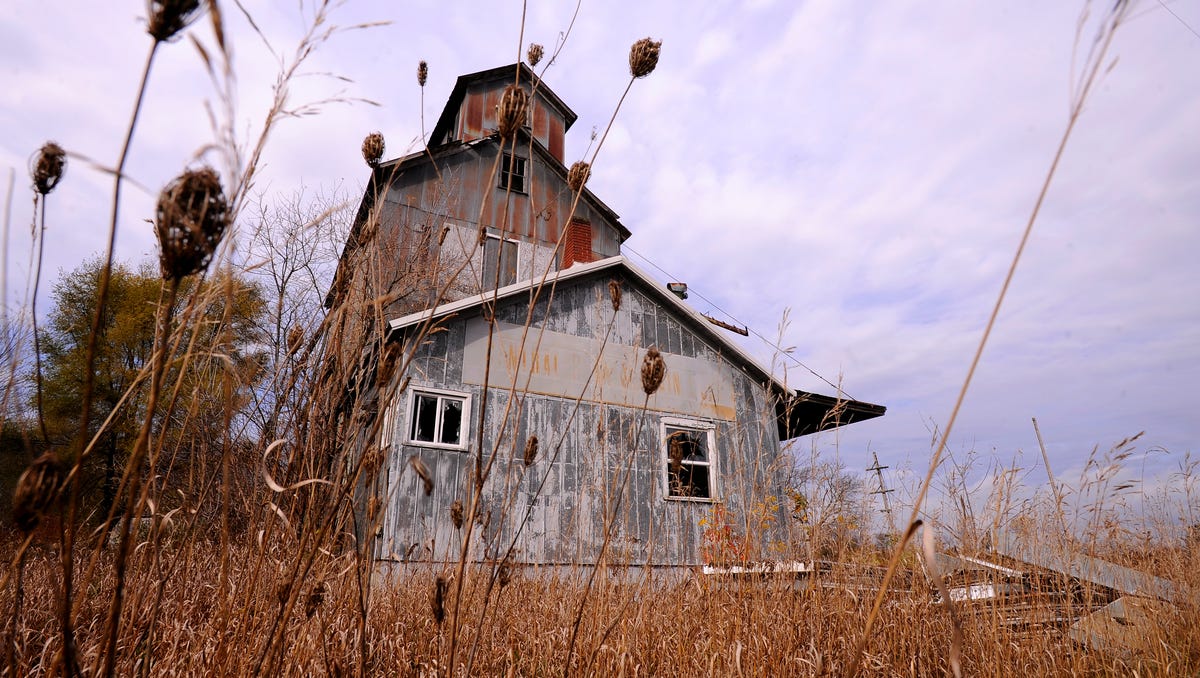Secrets Of Michigan’s Abandoned Copper Towns

Have you ever wondered about the hidden history of Michigan's abandoned copper towns? These ghost towns, once bustling with miners and their families, now stand as silent witnesses to a bygone era. Exploring these forgotten places offers a unique glimpse into the past, where copper was king and communities thrived. From the eerie silence of Quincy Mine to the crumbling structures of Central Mine, each location tells a story of ambition, hardship, and eventual decline. Whether you're a history buff or just curious, visiting these sites can be both educational and thrilling. Ready to step back in time and uncover the secrets of Michigan's copper towns?
Hidden Gems of Michigan's Copper Country
Michigan's Copper Country is a treasure chest of history and mystery. Once bustling with miners and their families, these towns now stand as silent witnesses to a bygone era. Let's uncover some of these fascinating places.
1. Calumet
Calumet was once the epicenter of the copper boom. Today, it offers a glimpse into the past with its well-preserved buildings and rich history.
- Calumet Theatre: Opened in 1900, this theater hosted famous performers and still operates today.
- Coppertown USA Mining Museum: Learn about the mining history and see artifacts from the copper era.
- Italian Hall Memorial: A somber reminder of the 1913 tragedy where many lost their lives during a Christmas Eve party.
2. Quincy Mine
Quincy Mine, known as "Old Reliable," produced copper for over a century. Now, it's a historical site offering tours and educational experiences.
- Quincy Mine Hoist: The largest steam-powered hoist in the world, used to lift miners and ore.
- Underground Mine Tour: Explore the depths of the mine and see how miners worked.
- Quincy Smelter: The only remaining copper smelter in the region, showcasing the refining process.
3. Central Mine
Central Mine was a thriving community in the 1800s. Today, it's a ghost town with remnants of its past still visible.
- Central Mine Methodist Church: Built in 1868, it still holds services once a year.
- Central Mine Visitors Center: Offers exhibits and information about the town's history.
- Walking Tour: Explore the ruins of homes, schools, and other buildings that once made up this vibrant town.
4. Delaware Mine
Delaware Mine offers a unique experience with self-guided tours and a chance to see the mine's inner workings.
- Mine Tours: Walk through the mine and learn about the mining techniques used.
- Rock and Mineral Shop: Purchase unique rocks and minerals found in the area.
- Ghost Town: Explore the remains of the Delaware town, including old buildings and mining equipment.
5. Phoenix
Phoenix, once a bustling mining town, now stands as a quiet reminder of the copper era.
- Phoenix Church: Built in 1858, this church is one of the oldest in the region.
- Phoenix Store: A general store that has been in operation since the 1800s, offering a glimpse into the past.
- Mining Ruins: Explore the remnants of the Phoenix Mine and other structures.
6. Cliff Mine
Cliff Mine was the first successful copper mine in the region. Its success sparked the copper rush in Michigan.
- Cliff Mine Ruins: Walk through the ruins and see the remains of the mine and surrounding buildings.
- Interpretive Signs: Learn about the history and significance of Cliff Mine through informative signs.
- Scenic Views: Enjoy breathtaking views of the surrounding landscape from the mine site.
7. Eagle River
Eagle River, once a booming mining town, is now a picturesque village with historical sites and natural beauty.
- Eagle River Falls: A stunning waterfall located near the old mining town.
- Eagle River Museum: Learn about the history of the town and its mining heritage.
- Historic Buildings: Explore the old courthouse, jail, and other buildings from the mining era.
8. Mohawk
Mohawk was a key player in the copper industry. Today, it offers a mix of history and outdoor activities.
- Mohawk Mining Company: Visit the site of the old mining company and see the remaining structures.
- Keweenaw National Historical Park: Part of the park is located in Mohawk, offering trails and historical exhibits.
- Snowmobile Trails: Enjoy the extensive network of snowmobile trails in the area, popular in winter months.
9. Gay
Gay, a small town with a big history, was home to the Mohawk and Wolverine mines.
- Gay School Museum: A former school turned museum, showcasing the town's history.
- Gay Bar: A historic bar that has been serving locals and visitors for decades.
- Stamp Mill Ruins: Explore the ruins of the old stamp mill used to process copper ore.
10. Freda
Freda, once a bustling mining town, now offers a peaceful retreat with historical sites and natural beauty.
- Freda Mill: The remains of the old mill that processed copper ore from nearby mines.
- Freda Park: A beautiful park with picnic areas and scenic views of Lake Superior.
- Hiking Trails: Enjoy the numerous hiking trails that wind through the area, offering stunning views and a chance to explore the natural beauty of the region.
Michigan's Hidden History
Michigan's abandoned copper towns offer a unique glimpse into the past. These ghost towns, once bustling with life, now stand as silent witnesses to a bygone era. Exploring places like Calumet, Quincy, and Central Mine reveals stories of hard work, community, and the boom-and-bust cycle of the copper industry.
Visiting these sites isn't just about seeing old buildings. It's about connecting with history, understanding the challenges faced by early miners, and appreciating the resilience of those who lived there. The Keweenaw Peninsula holds many secrets waiting to be uncovered.
For history buffs, adventure seekers, or anyone curious about Michigan's past, these abandoned towns are a must-see. They remind us of the state's rich heritage and the enduring spirit of its people. So, pack your bags, grab a camera, and step back in time to discover Michigan's hidden history.

